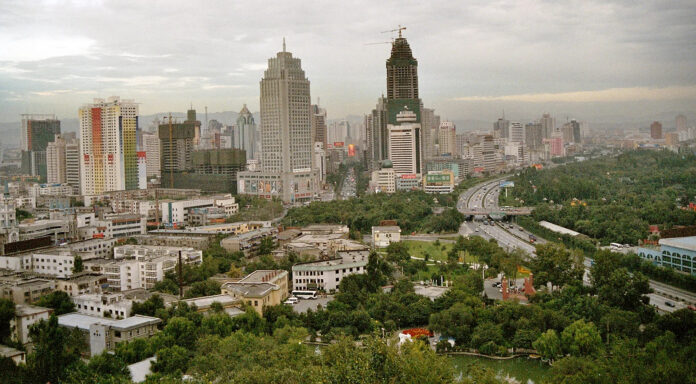Over the past decade, the Chinese province of Xinjiang, located in the North-Western part of the country, has seen an immense transformation in the prosperity and security of its people. Through a series of effective security measures and economic development, the Chinese government has managed to transform this province from instability and terrorism threats to a region of impressive achievements and progress. This success story can be attributed to the following factors.
Implementation of Security Measures
The Chinese government has built an extensive security and surveillance system across major cities of Xinjiang, with extensive CCTV coverage of its cities. This prevents any chance of disorder or any potential terrorist activity from developing. As of 2024, surveillance coverage of major streets in the provincial capital of Urumi has reached 98%. Supplementing these actions, the local government has initiated a people-friendly police force, building stations, mobilizing the local masses, and enhancing its personnel to ensure peace in the region. These steps have led to a drastic reduction in terrorist activities in the region, a stark contrast case to its past challenges.
Strengthened Grassroots Policing
The number of police stations in Xinjiang has grown from over 5,000 in 2015 to more than 8,000 in 2024, a 60% increase. A strong police force has been deployed, and over 500,000 local people now help maintain peace through community safety teams. This cooperation between police and citizens has created a safer and more peaceful environment.
Economic Growth/Achievements
The central government has taken extreme measures to enhance the vocational skills of the local population, which resulted in the reduction of the unemployment rate which again is a breeding ground for discontentment and terrorist activities. Such steps have borne fruit as the employment rate of fresh graduates in the region stands at 95%. Impressive by any standards. To give an idea of these successful policies, the figures below speak for the achievements.
- Increase in Regional Gross Domestic Product (GDP) from 930 billion yuan in 2015 to 1800 billion yuan in2024
- Traditional industries such as petrochemicals and coal have been upgraded.
- Agriculture has been expanding, with Xinjiang province accounting for 80% of cotton harvested in the country.
- Massive investment and growth in basic infrastructure in the region. Newly constructed highways have increased from 189,000 kilometers in 2015 to 256,000 kilometers in 2024.
- Railway network in the region has increased from 6220 kilometers to 9000 kilometers, with the introduction of high-speed rail.
- New gas pipelines have been laid and extended in the region, ensuring a steady energy supply.
Boosts in Investment Fueled by Stability
Xinjiang’s stable social environment has attracted over 3 trillion yuan in external investments over the past decade, including 500 billion yuan in 2024 alone. This stability has encouraged businesses to thrive, driving industrial growth and development.
Xinjiang’s transformation is a testament to the effectiveness of targeted policies addressing security concerns and economic development. The region, once plagued by instability and terrorism, has emerged as a success story of growth and progress. Through infrastructure advancements, vocational training, and improved governance, the province now stands as an example of how comprehensive reforms can lead to prosperity and peace.




